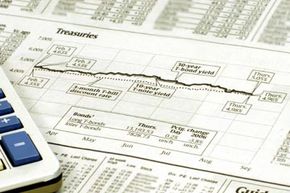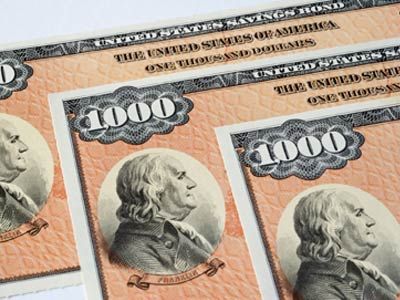Stories of government overspending and fiscal meltdown fill the news. Understandably, many people might rank the U.S. government down somewhere with an irresponsible friend when it comes to paying off loans. Yet every day, citizens, corporations and foreign sovereignties float loans to Uncle Sam -- $3.9 trillion worth in 2003 [source: Government Accountability Office]. And they get paid back, with interest. It's not some "free money from the government" scheme hawked on late-night TV. It's a financial tool as old as the nation itself: Treasury bonds.
A bond is money loaned to a business or government with the pledge that it will be returned at a certain time -- called the maturity date -- along with an agreed-on percentage of interest. Bonds issued by the U.S. Treasury Department come in increments of $100. They pay interest every six months until they mature at 30 years.
Advertisement
The Treasury issues bonds for two main reasons. One is to pay down the national debt. Another is to influence economic growth. Issuing bonds increases or decreases the amount of money available to banks. That affects interest rates, which affects whether you can borrow money to buy a car or to open a hot dog stand.
Despite the much-publicized downgrading of the United States' credit rating, Treasury bonds are considered risk free. The government has never failed to pay back a bond. However, with low risk comes low interest rates. Bonds are the tortoise in Aesop's fable of the tortoise and the hare, slowly but surely returning a tidy little profit. They're a good choice as long-term investments, balancing out shorter-term, higher-risk, higher-returning investments in a portfolio.
Unlike the $50 that your friend wheedles from you, bonds are marketable. Like houses, they might be bought and sold many times before they mature. Their reliability makes them popular, so you'll usually find a buyer or a seller. Also, the interest is free from state income tax.
Also like a house, a bond's price can rise or fall depending on economic factors. But money is different from a house, you say. A $100 bill is always worth $100, right? That's a good question, and it's where we'll start our investigation. On the next page, learn how your interest in bonds can yield a profit.
Advertisement




